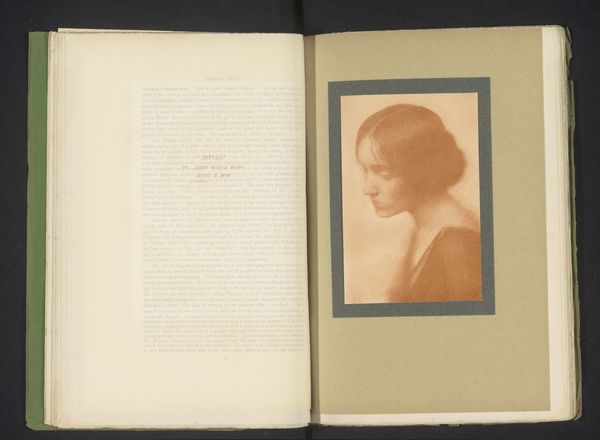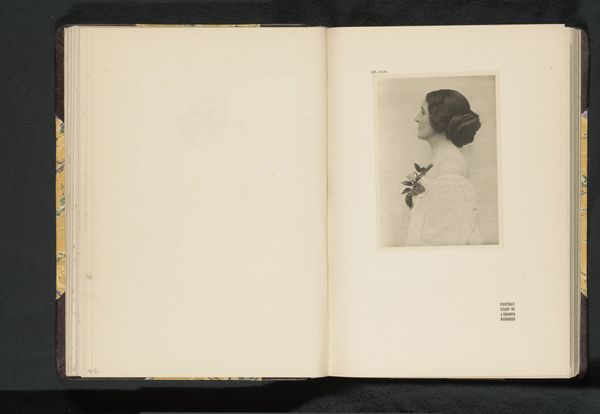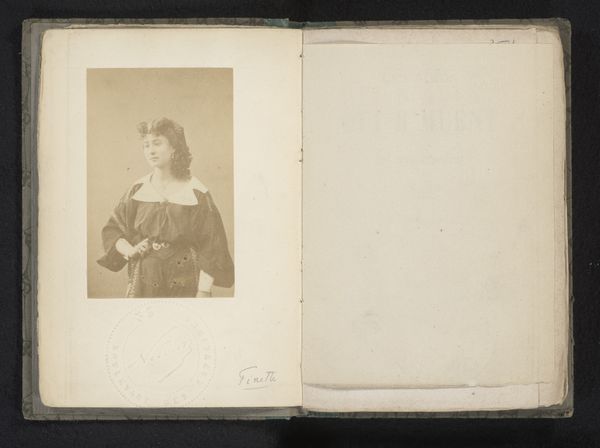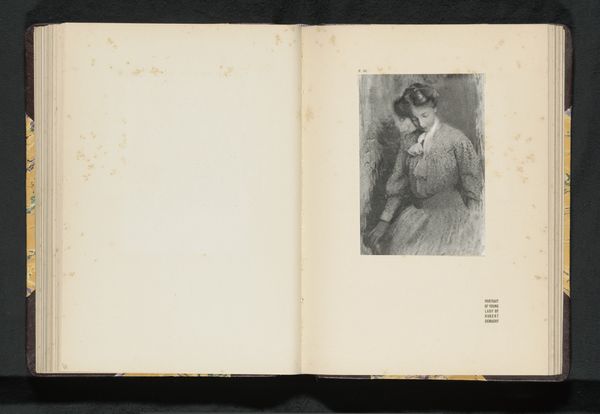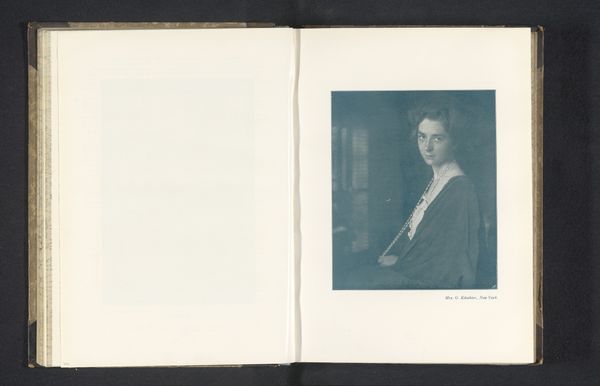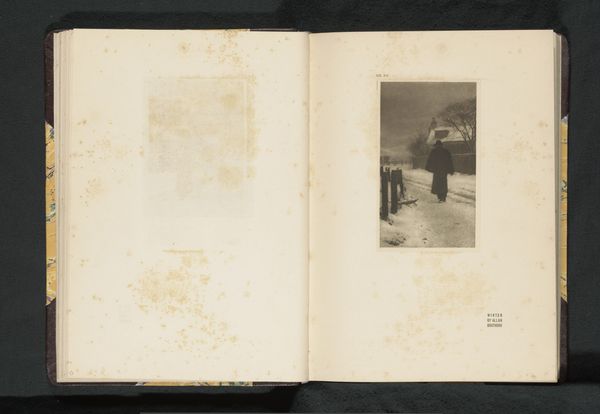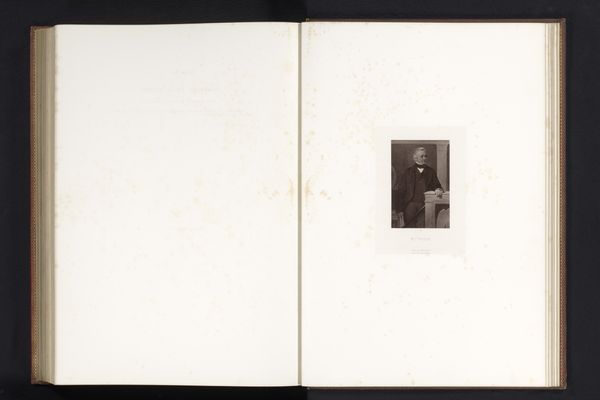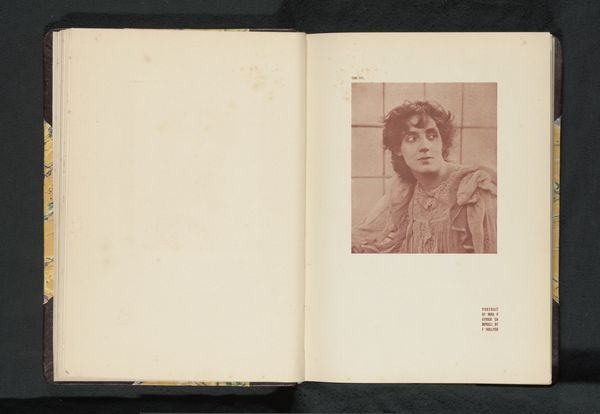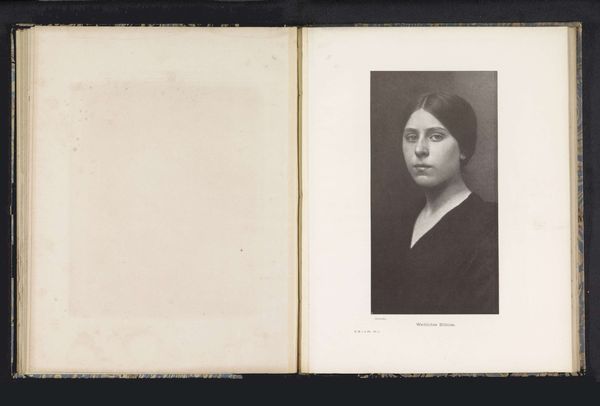
paper, photography, albumen-print
#
portrait
#
aged paper
#
homemade paper
#
paper non-digital material
#
self-portrait
#
paperlike
#
sketch book
#
paper texture
#
paper
#
photography
#
personal sketchbook
#
journal
#
paper medium
#
sketchbook art
#
albumen-print
Dimensions: height 152 mm, width 193 mm
Copyright: Rijks Museum: Open Domain
Editor: This is "Portrait of an Unknown Woman," taken before 1905, possibly by Will A. Cadby. It’s an albumen print, presented within the pages of what looks like a sketchbook. I’m really drawn to the aged paper and its texture. What strikes you about this particular piece? Curator: I’m immediately thinking about the material conditions of photographic production at the turn of the century. Albumen prints, for example, were commercially produced using egg whites. Think about the labor involved in producing the print and its social implications, who had access, how the mass consumption of photography affected perceptions. Editor: So, you’re saying we need to consider not just the image itself but also how it was physically created and consumed? Curator: Exactly. The choice of albumen impacts the image itself and creates value and a record. Furthermore, placing it in a book elevates it. I see a tension here between the intimacy of a sketchbook, potentially handmade paper even, and the commercially viable process of albumen printing. What kind of status does the book confer onto what might have otherwise just been a commercial print? Does this format challenge the mass-produced nature? Editor: That's a really interesting point. I was just focused on the aesthetic qualities of the photograph, like the soft focus and the vintage feel but what you point out suggests that the way in which the image was produced has meaning itself. Curator: Right. We could delve deeper, looking at things like who owned the sketchbook and what it tells us about their relationship to both artistic and photographic practices. Consider how this work challenges traditional art categories, blurring photography and “craft”. What have you learned from our discussion? Editor: That paying attention to materials, processes and presentation format can greatly broaden the interpretation of an image. Thanks! Curator: Indeed! Examining those qualities reveals fascinating questions about the photograph’s social context and value.
Comments
No comments
Be the first to comment and join the conversation on the ultimate creative platform.
